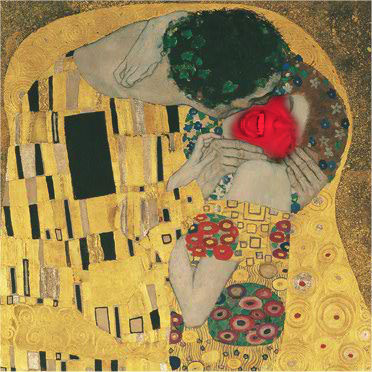Winter Solstice00:36 Dec 21 2010
Times Read: 589

December 19, 2010
There Goes the Sun
By RICHARD COHEN
WHAT is the winter solstice, and why bother to celebrate it, as so many people around the world will tomorrow? The word “solstice” derives from the Latin sol (meaning sun) and statum (stand still), and reflects what we see on the first days of summer and winter when, at dawn for two or three days, the sun seems to linger for several minutes in its passage across the sky, before beginning to double back.
Indeed, “turnings of the sun” is an old phrase, used by both Hesiod and Homer.
**************************************
Yet, for all these symbolisms, this time remains at heart an astronomical event, and quite a curious one. In summer, the sun is brighter and reaches higher into the sky, shortening the shadows that it casts; in winter it rises and sinks closer to the horizon, its light diffuses more and its shadows lengthen. As the winter hemisphere tilts steadily further away from the star, daylight becomes shorter and the sun arcs ever lower. Societies that were organized around agriculture intently studied the heavens, ensuring that the solstices were well charted.
Despite their best efforts, however, their priests and stargazers came to realize that it was exceptionally hard to pinpoint the moment of the sun’s turning by observation alone — even though they could define the successive seasons by the advancing and withdrawal of daylight and darkness.
The earth further complicates matters. Our globe tilts on its axis like a spinning top, going around the sun at an angle to its orbit of 23 and a half degrees. Yet the planet’s shape changes minutely and its axis wobbles, thus its orbit fluctuates. If its axis remained stable and if its orbit were a true circle, then the equinoxes and solstices would quarter the year into equal sections. As it is, the time between the spring and fall equinoxes in the Northern Hemisphere is slightly greater than that between fall and spring, the earth — being at that time closer to the sun — moving about 6 percent faster in January than in July.
The apparently supernatural power manifest in solstices to govern the seasons has been felt as far back as we know, inducing different reactions from different cultures — fertility rites, fire festivals, offerings to the gods. Many of the wintertime customs in Western Europe descend from the ancient Romans, who believed that their god of the harvest, Saturn, had ruled the land during an earlier age of abundance, and so celebrated the winter solstice with the Saturnalia, a feast of gift-giving, role-reversals (slaves berating their masters) and general public holiday from Dec. 17 to 24.
The transition from Roman paganism to Christianity, with its similar rites, took several centuries. With the Emperor Constantine’s conversion to Christianity in the fourth century, customs were quickly appropriated and refashioned, as the sun and God’s son became inextricably entwined. Thus, although the New Testament gives no indication of Christ’s actual birthday (early writers preferring a spring date), in 354 Pope Liberius declared it to have befallen on Dec. 25.
The advantages of Christmas Day being celebrated then were obvious. As the Christian commentator Syrus wrote: “It was a custom of the pagans to celebrate on the same Dec. 25 the birthday of the sun, at which they kindled lights in token of festivity .... Accordingly, when the church authorities perceived that the Christians had a leaning to this festival, they took counsel and resolved that the true Nativity should be solemnized on that day.”
In Christendom, the Nativity gradually absorbed all other winter solstice rites, and the co-opting of solar imagery was part of the same process. Thus the solar discs that had once been depicted behind the heads of Asian rulers became the halos of Christian luminaries. Despite the new religion’s apparent supremacy, many of the old customs survived — so much so that church elders worried that the veneration of Christ was being lost. In the fifth century, St. Augustine of Hippo and Pope Leo the Great felt compelled to remind their flocks that Christ, not the sun, was their proper object of their worship.
While Roman Christianity was the dominant culture in Western Europe, it was by no means the only one. By millennium’s end, the Danes controlled most of England, bringing with them “Yule,” their name for winter solstice celebrations, probably derived from an earlier term for “wheel.” For centuries, the most sacred Norse symbol had been the wheel of the heavens, represented by a six- or eight-spoked wheel or by a cross within a wheel signifying solar rays.
The Norse peoples, many of whom settled in what is now Yorkshire, would construct huge solar wheels and place them next to hilltop bonfires, while in the Middle Ages processions bore wheels upon chariots or boats. In other parts of Europe, where the Vikings were feared and hated, a taboo on using spinning wheels during solstices lasted well into the 20th century. The spinning-wheel on which Sleeping Beauty pricks her finger may exemplify this sense of menace.
Throughout much of Europe, at least up until the 16th century, starvation was common from January to April, a period known as “the famine months.” Most cattle were slaughtered so they would not have to be fed over the winter, making the solstice almost the only time of year that fresh meat was readily available. The boar’s head at Christmas feasts represents the dying sun of the old year, while the suckling pig — with the apple of immortality in its mouth — the new.
The turning of the sun was perhaps even more important in the New World than the Old. The Aztecs, who believed that the heart harbored elements of the sun’s power, ensured its continual well-being by tearing out this vital organ from hunchbacks, dwarves or prisoners of war, so releasing the “divine sun fragments” entrapped by the body and its desires.
The Incas would celebrate the solar festival of Inti Raymi by having their priests attempt to tie down the celestial body. At Machu Picchu, high in the Peruvian Andes, there is a large stone column called the Intihuatana, (“hitching post of the sun,”) to which the star would be symbolically harnessed. It is unclear how the Incas measured the success of this endeavor, but at least the sun returned the following day.
Yet above all other rituals, reproducing the sun’s fire by kindling flame on earth is the commonest solstice practice, both at midsummer and midwinter. Thomas Hardy, describing Dorset villagers around a bonfire in “The Return of the Native,” offers an explanation for such a worldwide phenomenon:
“To light a fire is the instinctive and resistant act of men when, at the winter ingress, the curfew is sounded throughout nature. It indicates a spontaneous, Promethean rebelliousness against the fiat that this recurrent season shall bring foul times, cold darkness, misery and death. Black chaos comes, and the fettered gods of the earth say, ‘Let there be light.’ ”
So there is good reason to celebrate the winter solstice — but maybe that celebration is still touched with a little fear.
Richard Cohen is the author of “Chasing the Sun: The Epic Story of the Star That Gives Us Life.”








COMMENTS
-
LibidinousLuke
06:50 Jan 26 2011
That's kinda sad. I feel sorry for her.